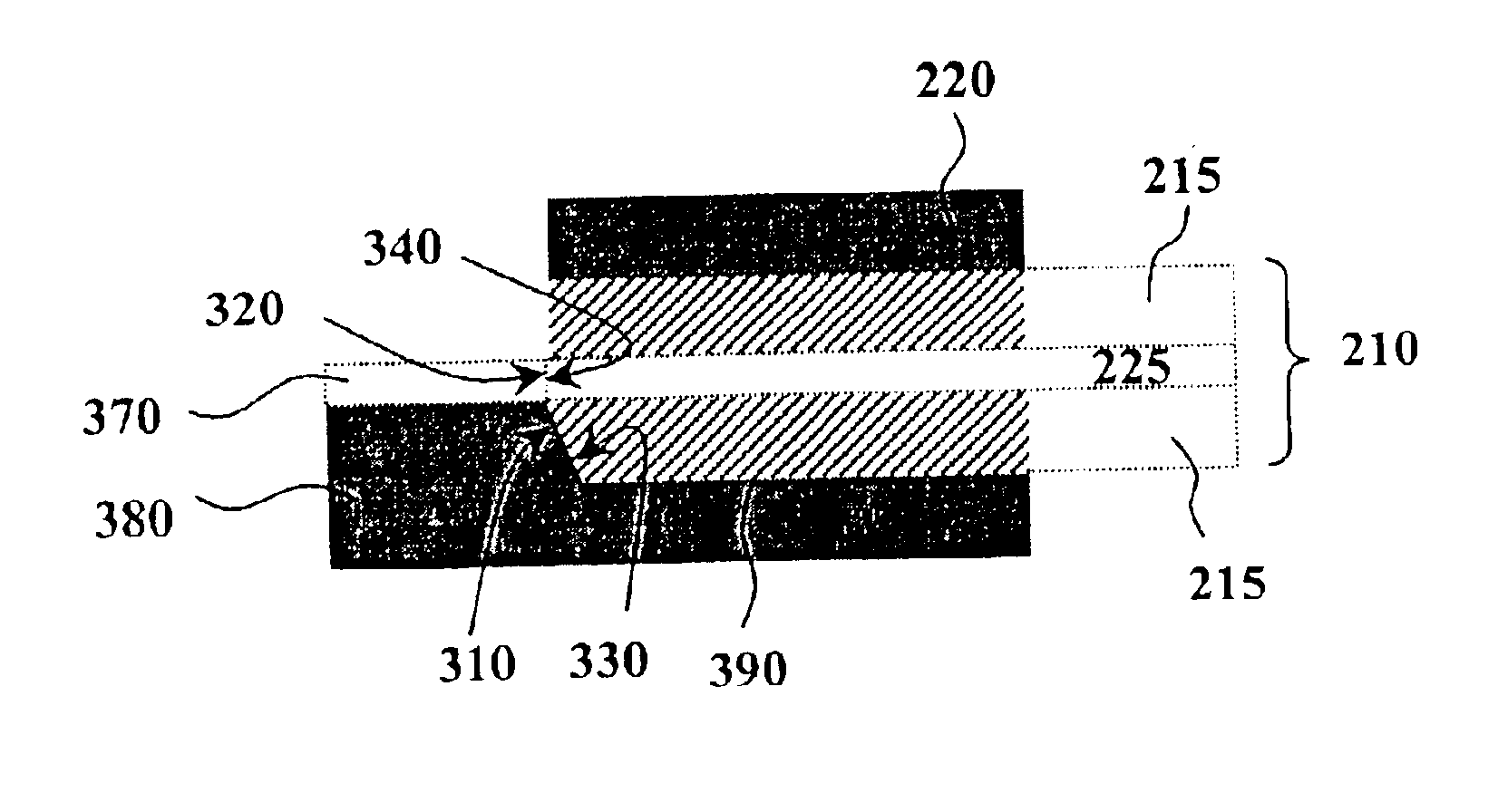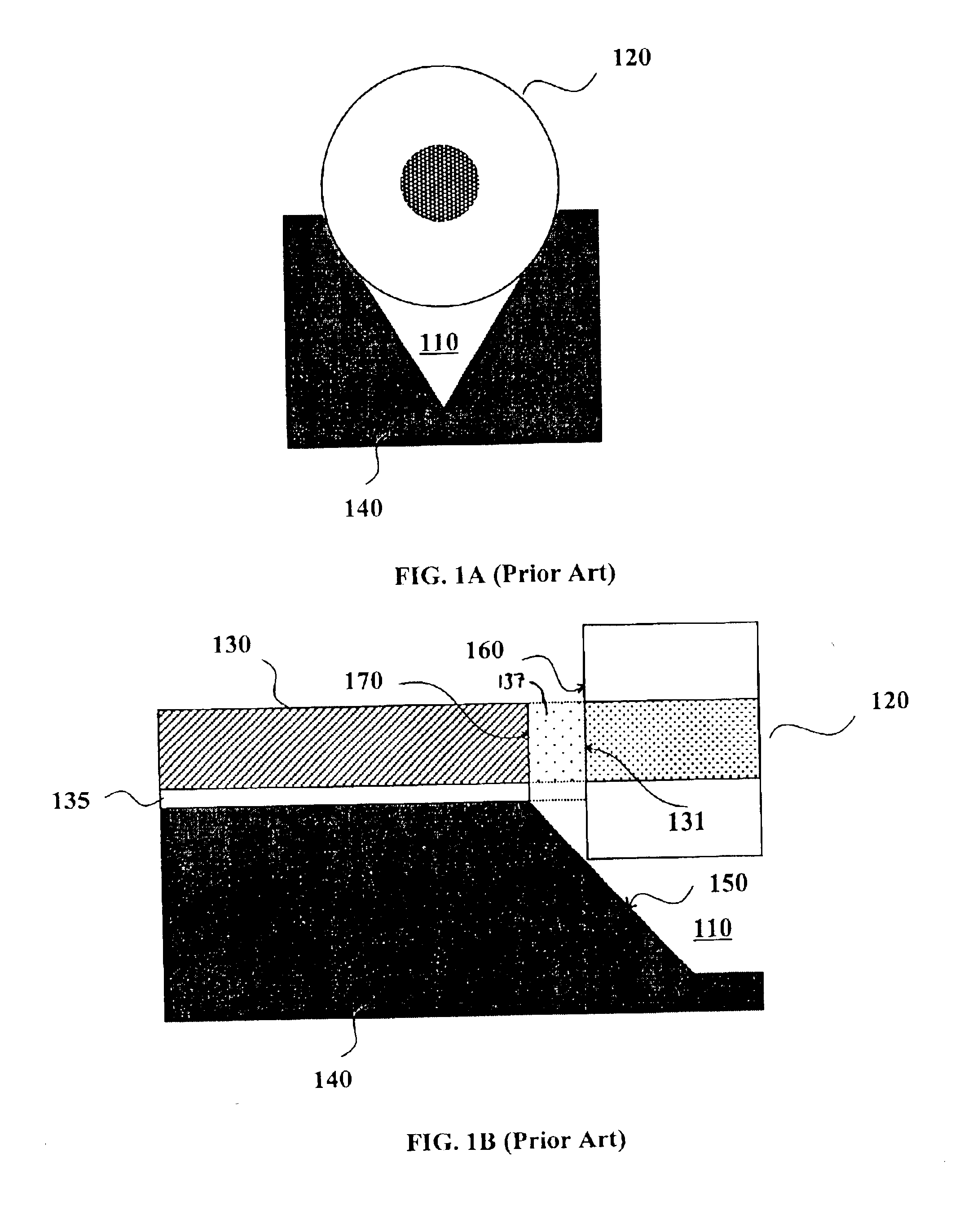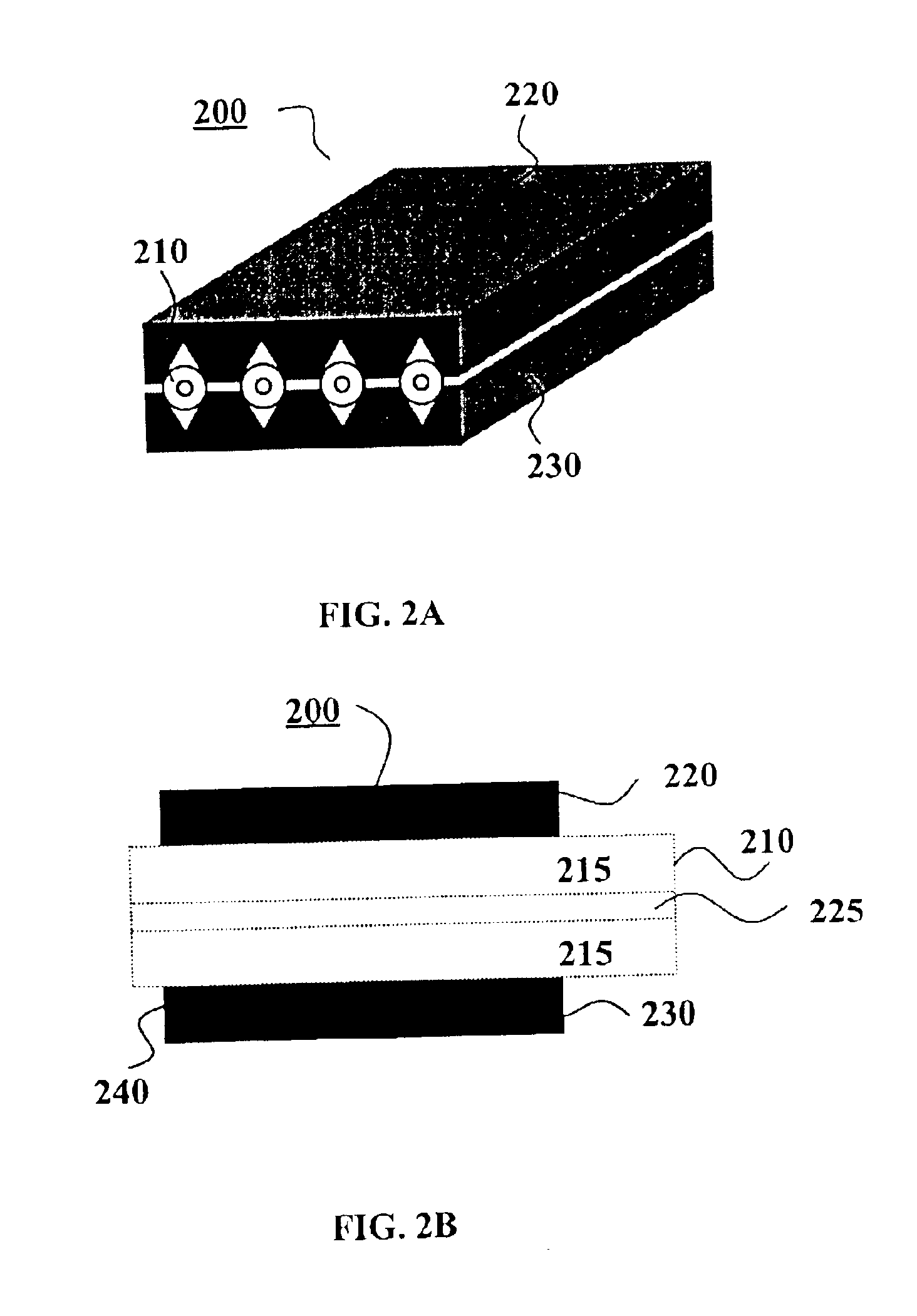Connection between a waveguide array and a fiber array
- Summary
- Abstract
- Description
- Claims
- Application Information
AI Technical Summary
Benefits of technology
Problems solved by technology
Method used
Image
Examples
Embodiment Construction
FIGS. 2A and 2B show a three-dimensional view and a side view, respectively, of an exemplary embodiment of a fiber array 200. Fiber array 200 comprises first and second grooved chips 220, 230, which may be made from silicon or other material using any suitable fabrication technology, such as wet etching. Depending on the diameter of the fiber and the desired height of the fiber central axis relative to the chip surface (for instance, 5 μm above the surface), etching parameters for fabricating the grooves may be selected, as is well known in the art. The grooves may be V-grooves as shown, or they may have a U-shaped or other cross section suitable for holding optical fibers in position. One or more optical fibers 210 are sandwiched between first and second chips 220 and 230. The spacing of the fibers in a multi-fiber array is controlled by the spacing of the grooves, which may be selected as desired. The grooved surface of the first chip 220 is treated so as to bond fibers 210 perman...
PUM
 Login to View More
Login to View More Abstract
Description
Claims
Application Information
 Login to View More
Login to View More - R&D
- Intellectual Property
- Life Sciences
- Materials
- Tech Scout
- Unparalleled Data Quality
- Higher Quality Content
- 60% Fewer Hallucinations
Browse by: Latest US Patents, China's latest patents, Technical Efficacy Thesaurus, Application Domain, Technology Topic, Popular Technical Reports.
© 2025 PatSnap. All rights reserved.Legal|Privacy policy|Modern Slavery Act Transparency Statement|Sitemap|About US| Contact US: help@patsnap.com



